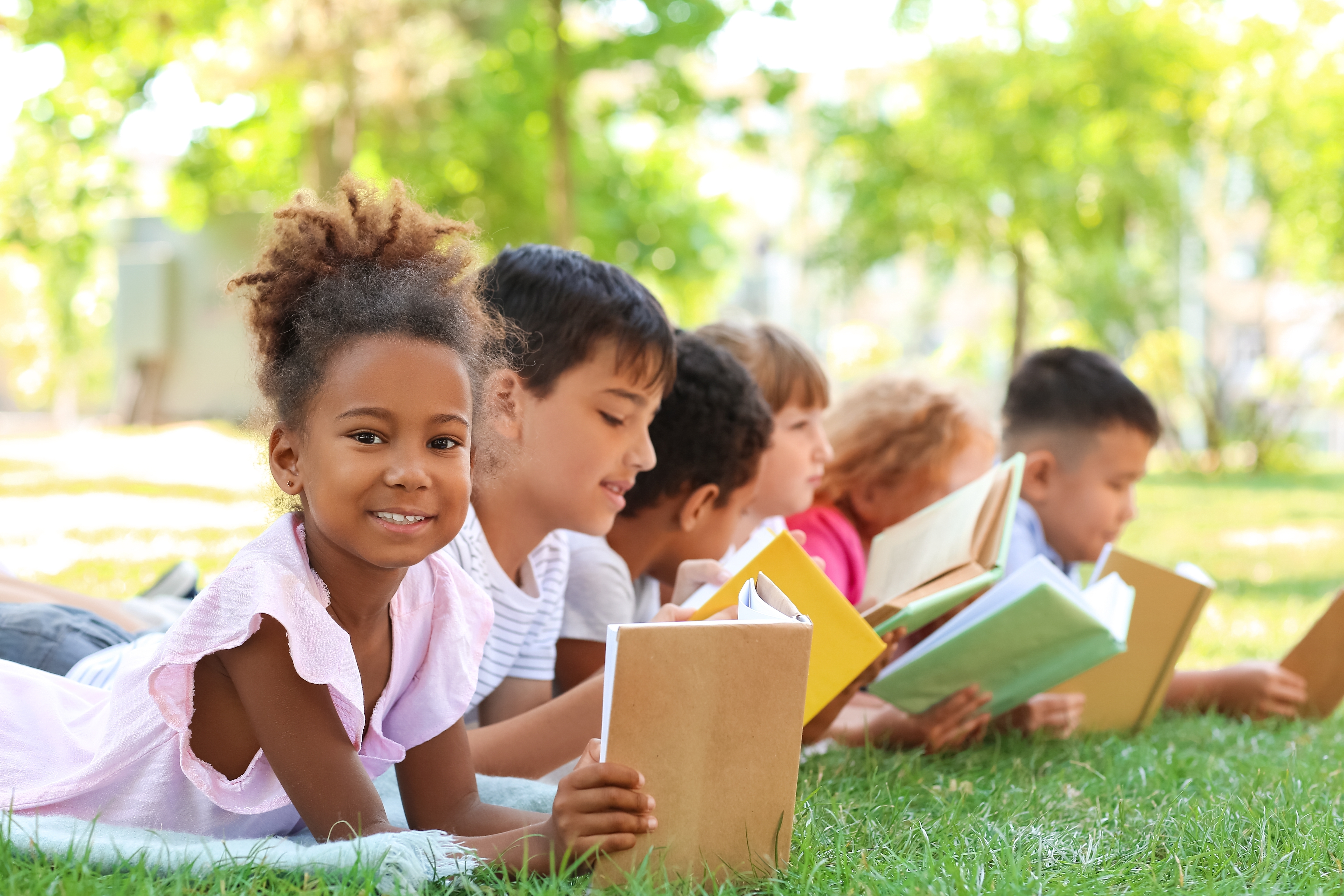Visual interpretation Normal Reading Fiction Worksheets for Ages 3-7
4 filtered results
-
From - To
Our "Visual Interpretation Normal Reading Fiction Worksheets for Ages 3-7" focus on developing young learners' reading skills through engaging visual aids and storytelling. These interactive worksheets are designed to help children comprehend and interpret illustrated stories, enhancing their understanding and imagination. Each activity is crafted to improve critical thinking, boost creativity, and encourage a love for reading. Ideal for early childhood education, these resources provide an enjoyable way for kids to explore fiction while honing their visual interpretation skills. Perfect for parents and educators aiming to foster a strong foundational learning experience.
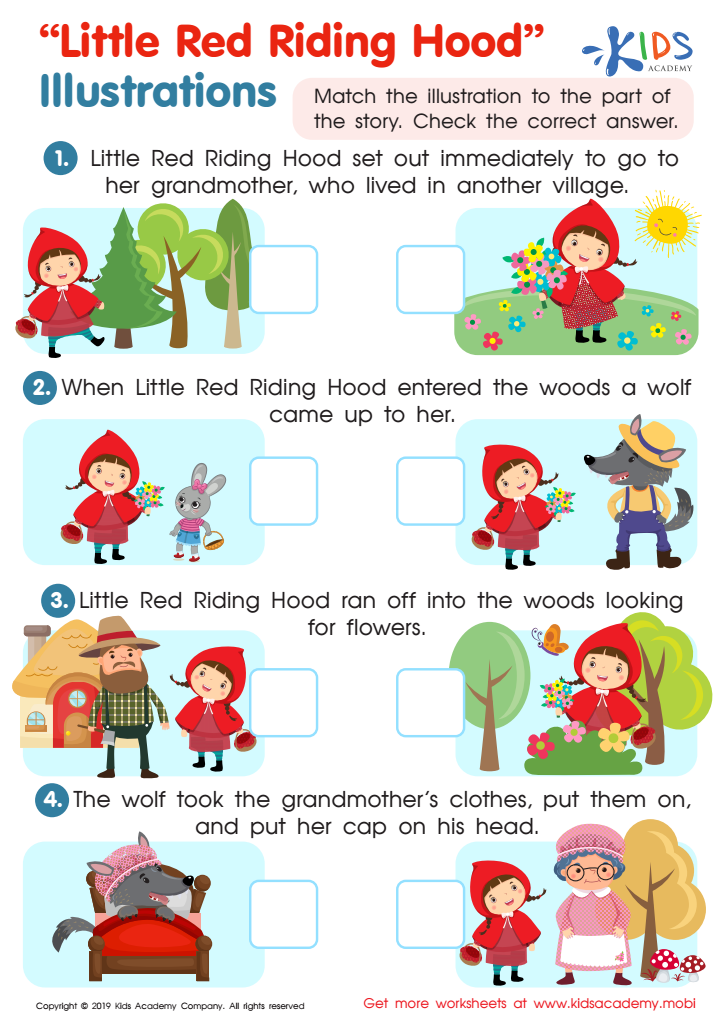

Little Red Riding Hood: Illustrations Worksheet
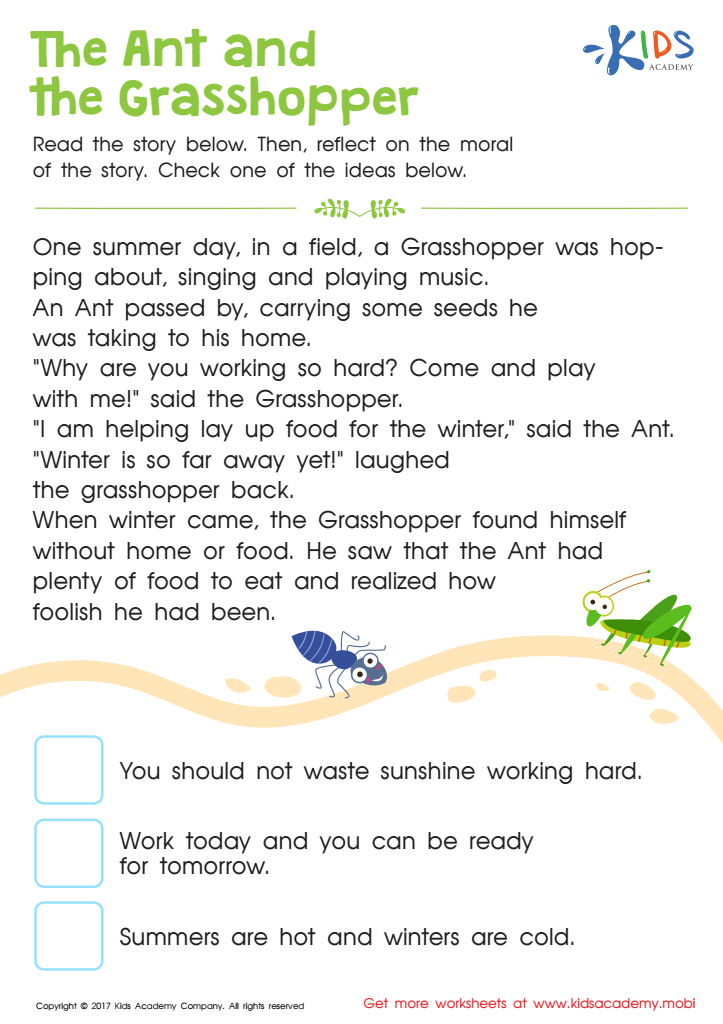

The Ant and The Grasshopper Printable
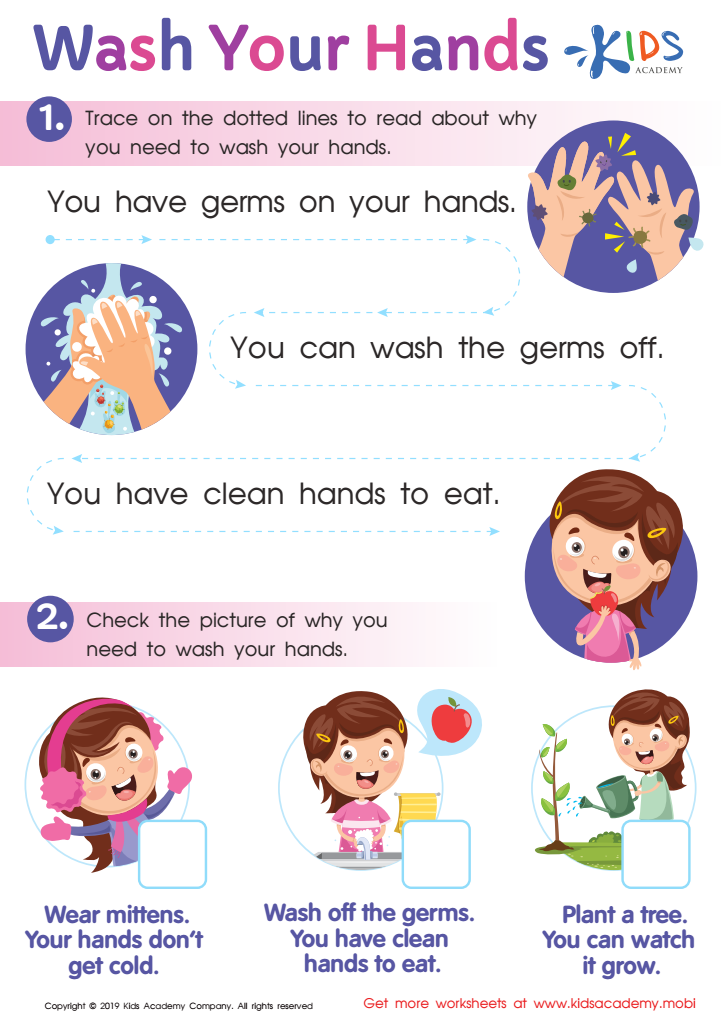

Wash Your Hands Worksheet
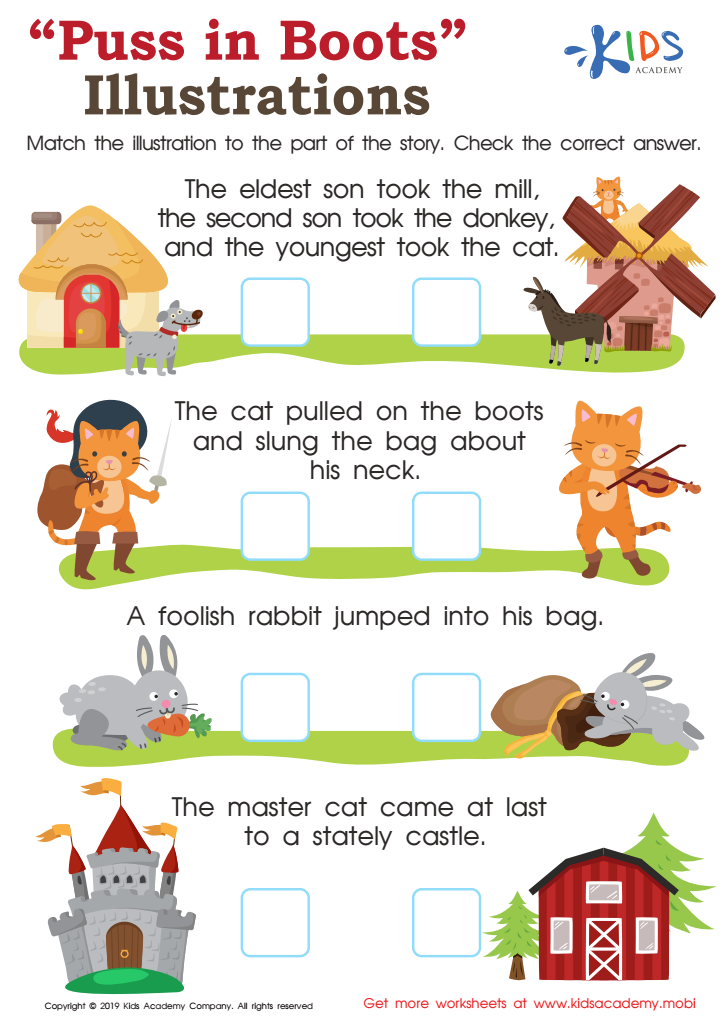

Puss in Boots Illustrations Worksheet
Children aged 3-7 are at a critical stage of development where foundational skills are formed. Visual interpretation, or the ability to understand and interpret visual information, is crucial for their cognitive development and sets the stage for more complex skills. Normal reading fiction plays an essential role in nurturing this ability. When parents and teachers expose children to storybooks with rich illustrations and compelling narratives, they foster both creativity and comprehension.
Firstly, engaging with illustrated fiction helps children make connections between images and words, aiding in vocabulary expansion and improving language skills. They learn to infer meaning from context, an ability that underpins successful reading comprehension later in life. This practice also strengthens their attention to detail and enhances cognitive abilities like memory and sequence understanding.
Secondly, stories nurture a child's imagination, empathy, and emotional intelligence. Characters and scenarios in fiction allow children to explore different perspectives and emotions safely. This emotional literacy is essential for social interactions and personal relationships.
Lastly, the habit of reading kindle's a lifelong love for learning and books. Teachers and parents who prioritize visual interpretation in reading fiction support a child's educational and personal development tremendously. This combined focus bridges critical early literacy gaps and prepares them for more formal education, fostering well-rounded growth.
 Assign to My Students
Assign to My Students





.jpg)
.jpg)

